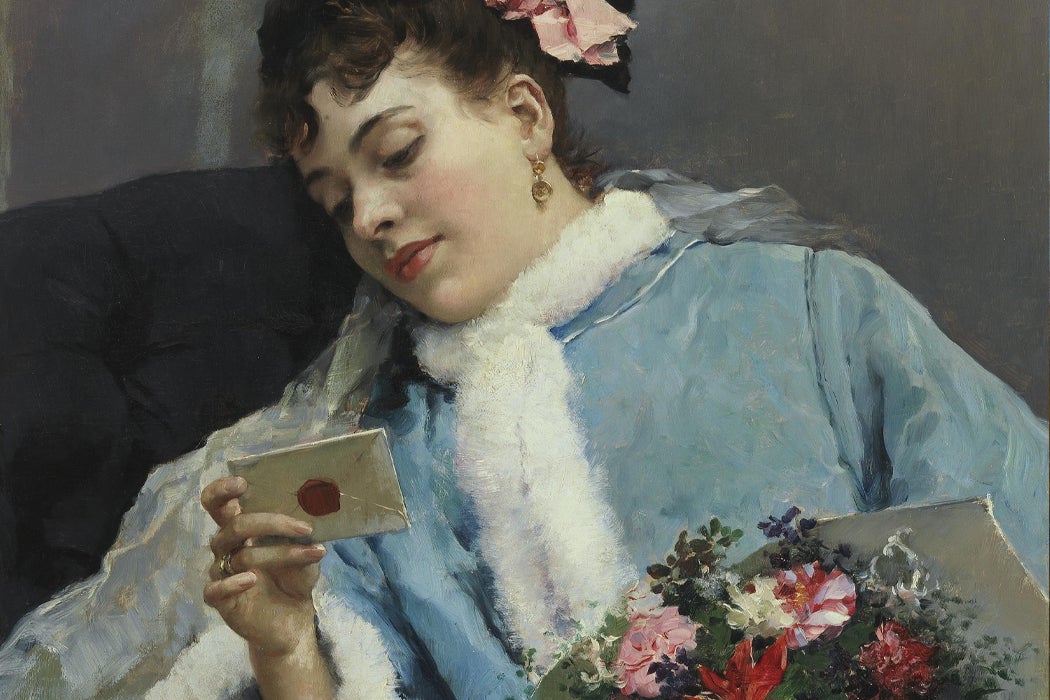The philosophy of “separate spheres” meant that white, middle-class women of the nineteenth century lived lives largely segregated from men. What, then, did it mean when they got married? Historian Steven M. Stowe examines women’s reaction to leaving their passionate friendships—and finds evidence for how women navigated their surprisingly disappointing courtships—through their letters.
For Stowe, courtship correspondence is “a valuable text in studying the culture of women’s experience.” He examines the letters of Bessie Lacey, a woman born to the planter class in antebellum Raleigh, North Carolina. She grew up in a world that insisted not just on separate spheres for women, but on the “crucial role that white women played into maintaining racial hierarchy.” This meant that Lacey was trained to rule firmly over enslaved people, but also to show the mild, feminine face that was valued by her white peers.
Much of her education in that world took place at a female academy where she was immersed in an entirely feminine world. There, she found close relationships with other young women, demonstrating “growing delight in a female realm” that was sealed off from the rest of society. Her friendships were similar to other close female friendships of the day. She shared beds with her closest friends, and developed a close intimacy with one friend in particular, Maggie Morgan. Stowe describes the progression of their friendship from casual to close, their use of endearments like “Dearest,” their loving closeness.
But the next phase of a young woman’s life threatened these all-encompassing friendships. Bessie was expected to marry, and carried on a courtship by mail with Thomas Webber Dewey, the brother of a friend.
Stowe analyzes the progression of that courtship and relates it to Lacey’s experiences at school. After a period of formality, she “sought to break through courtship conventions and similarly share them with Thomas. She wanted to impose homosocial standards and expectations onto her heterosexual relationship.” Lacey used the love she developed with her school friends as a template for her love with her future husband.
But the differences between the couple’s sphere are apparent in the letters, writes Stowe. Dewey was focused on business and politics—spheres Lacey could never enter. She was concerned with a social blessing on their union and urged him to get her father’s permission to marry so they could make their engagement known. “Slowly she abandoned her search for intimacy, unanswered by Thomas, and settled for an attempt to secure a set of terms for her marriage,” Stowe writes.
Once a Week
Lacey found herself in a frustrating position. Her close relationships with other women had led her to expect that in romance, but as she got closer to her fiancé, she realized he would live in a sphere separate from hers even after their union. “Courtship, as Bessie’s experience suggests, served to partly exorcise intimacy from a relationship while preserving marriage—an emotionally trimmed, functional marriage—as the goal,” writes Stowe.
Bessie Lacey’s love could never fulfill the emotional expectations she had developed in her fond friendships with other women—and, suggests Stowe, that was the point. By abandoning her illusions about heterosexual romance, Lacey became the firm, convention-bound woman she was expected to be.







